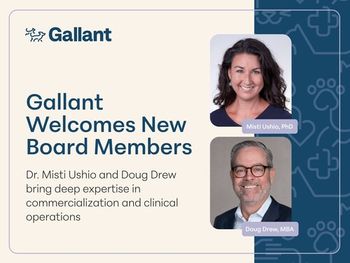
Don't act like you're not discounting
Do you discount your services? Sure you do.
Do you discount your services? Sure you do. What? Don't believe me? There's not a single veterinary practice out there that doesn't discount in one way or another. You can't help it—our profession just hasn't kept up with the times. If you graduated from veterinary school in 1990 when the average distemper/parvovirus fee was $34, just keeping up with inflation would make it $56 today. If any prescription goes out your door for less than $24.45—even for a single pill—you're discounting. If your occult heartworm test is less than $40, you're discounting. You're discounting your services and products because you're not charging what they're worth.
Discounting is the act of selling a product or service for less than the list price. Of course, in our profession, there's no gold standard of list prices. Other industries do have standards to follow. In a restaurant, the entrée is priced at 2.5 times the cost of the ingredients. In a shoe store, keystoning is the rule; that means you sell shoes for twice your cost.
Rules to live by
To make do over the years, I've found these rules work well in veterinary medicine:
> Price over-the-counter products at 2.7 times cost.
> Price prescription items at double the cost per pill plus $24.85.
> Double your out-of-clinic lab's charge to you plus $23.
> Charge $8 per minute of surgery, from incision to last suture.
> Charge 3.25 times your office visit fee for anesthesia.
> Charge 3 times your office visit (minimum $120) for radiographs (two views). Additional views are $60 each.
That's just the tip of the iceberg. There are 295 other fee ratios I've calculated.
There are inviolable rules to being in business and we have to play by them if we want to survive. Here's one: No profit exists until you pay your overhead. In our profession, we seek—sometimes in vain—a 40 percent profit after a 60 percent overhead.
A look at the numbers
Let's look at an example. Consider a solo veterinary practice with a barely acceptable $600,000 in gross revenue. Two-thirds of the revenue comes from professional services, 10 percent from over-the-counter sales, 17 percent from prescription drug sales and 7 percent from diets. Variable direct costs and fixed overhead (rent, salaries, insurance) is 45 percent. See "Table 1" for how the practice's numbers break down.
Table1 Example: Practice profits
What should be immediately obvious is that professional services drive profits and everything else has a poor margin after deducting overhead costs. Over-the-counter sales operate with a maximum profit of 15 percent. Individual items may appear profitable, but say a bottle of something goes unsold for eight months. The cost of receptionists and air conditioning for the reception area rapidly eats up the profit. Any discount here is intolerable and must never ever approach 15 percent.
Prescription sales are keyed to a 15 percent direct cost and a 45 percent overhead cost plus waste, loss and expirations. Diets cannot be discounted. On the surface, it may appeaqr tyhat you shouldn't sell therapeutic diets because these bags and cans of food generate a loss. However, studies prove that associated sales concurrent with diet pickups bring in additional profits to compensate for the direct loss. That's why there's no such thing as a pet-food-only store. Leashes and gadgets are keystoned (100 percent markup), at minimum, and make up for the loss.
When you look at the big picture, inventory sales make up about one-third of revenue but offset a great deal of the overhead generated by professional services. Many practice owners debate this, but there are few practices that operate without the extras.
Steer clear of discount clubs
Now cometh the much-vaunted discount clubs. These organizations offer new clients to you if you play by their rules. Here's one example:
Discount Club ABC, mandates a 15 percent discount and one free office visit for its members' clients. The club makes you sign an exclusive contract forbidding you from joining any other pet consumer group.
Another, Discount Group XYZ, mandates you offer clients an impossible 30 percent discount with a 50 percent remission of a $99 to $119 membership fee. The bottom line is, elective procedures and the competitive marketplace already force too many discounted shopped services on the practitioner. The last thing we need are organized mandated discounts. They are unaffordable insanity.
Some pet clubs offer discounts on airfare, hotels and other travel needs to veterinarians. That would be great if any of us had the time to take as much vacation annually as a private in the army (30 days).
Discount drugs
A veterinarian offers discounts from drug distributors who operate with lean margins. Drug distributors today whose stock is rapidly rising in value operate on a 20 percent to 25 percent markup. To discount meaningfully (at least 15 percent) would require losing 60 percent to 75 percent of their profits. They can't afford that and neither can we.
If you discount an item, you have to sell more of that item to generate the same profit you would've made without a discount. (See "Table 2" above.) And don't forget that each additional sale you require to produce the same profit carries with it an overhead factor in receptionist and computer time.
Table2 Discounts' dangerous effects
Nobody gets rich by cutting prices unless they buy directly from the manufacturer who shared in the price reduction. Wal-Mart and Sears can do it. But even big-box stores have trouble maintaining a profit margin from time to time. Trust me: Veterinary practices can't discount.
Dr. Snyder, a well-known consultant, publishes Veterinary Productivity, a newsletter for practice productivity. He can be reached at 112 Harmon Cove Towers Secaucus, NJ 07094; (800) 292-7995;
For a complete list of articles by Dr. Snyder, visit
Newsletter
From exam room tips to practice management insights, get trusted veterinary news delivered straight to your inbox—subscribe to dvm360.






